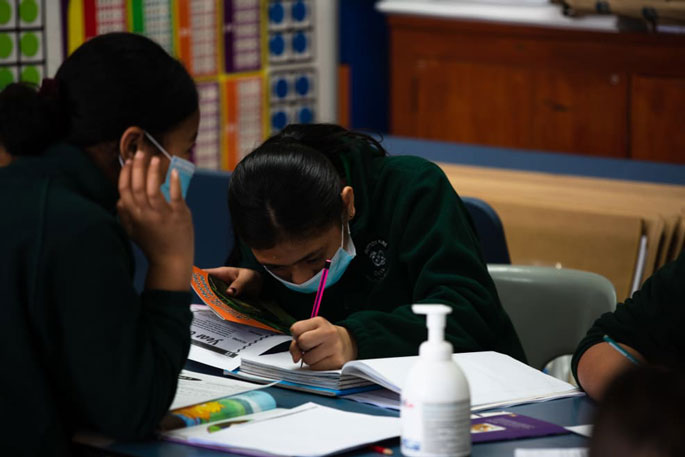Newly released official documents provide a strongly worded warning about the damage Covid-19 has done to the school system.
The Cabinet paper and Education Ministry briefing papers explain the urgent need for a $43 million package announced in September to recruit more teachers and provide catch-up learning for thousands of teenagers.
The documents say there was a small window of opportunity to head off significant ill-effects to both student achievement and the supply of teachers.
"The impacts of Covid-19 on the education system are significant and ongoing," a September Cabinet paper says.
"Significant risks exist if we fail to act. Many learners are likely to experience poor academic outcomes, particularly those in their final years of schooling. This would also risk teacher supply issues worsening, which could lead to further disruption in access to quality in-person education."
The paper says there is a larger than usual number of non-enrolled learners.
"Some learners will not be re-engaged in schooling or will not make sufficient progress, leading to lower achievement and qualification attainment, potentially embedding poor outcomes and other inequities," it says.
Parts of the paper were redacted and the remaining information did not provide any figures on the scale or nature of under-achievement.
However, figures provided to RNZ by the Qualifications Authority showed by the end of November students had recorded fewer NCEA credits on average than at the same time in any of the previous three years.
An August briefing paper shows the ministry considered but ruled out asking schools to focus on key parts of the curriculum or extending the school day.
"Targeting certain curriculum areas, such as mathematics or literacy, could mean learners miss out on other learning areas that they enjoy. Extending the school day is not viable, given the levels of stress and tiredness already being reported among both teachers and learners," says the briefing paper.
It also suggests 20 or 40 per cent of students might be eligible for extra tutoring and the most effective approach would be classes with tutors three times a week for an hour at a time for 10 weeks.
The papers say providing money directly to schools will be the most effective way of ensuring schools could help students quickly, though there is a risk some might not use it effectively.
They say schools could use retired or relief teachers and university students as tutors.
They also say tutoring companies are geared to higher-income families and might not be a good fit for schools in low socio-economic areas.
Teachers in short supply
A September Cabinet paper indicates the supply of teachers is similar to worst-case scenarios forecast last year.
"Recent data also shows that the outlook for teacher supply in 2023 is materially worse than previous years and in line with the more challenging projections from the annual teacher demand-supply planning exercise in late 2021," it says.
"We consider these issues a priority to both mitigate harms already caused by lost learning, and to proactively address short-term teacher shortages before they become more critical."
It says without action, pupils might experience more disruption to their learning, and a shortage of teachers could make teaching harder.
"Fully addressing the impact Covid has had on learning will require sustained focus over several years."
The report says more school teachers are leaving their jobs, more vacancies are being advertised, and vacancies are being readvertised, nearly twice as much as previous years.
"If the current trends continue, 200 to 800 additional primary teachers and 400 to 1000 secondary teachers may leave regular teaching in 2022 compared to 2021 when the borders were closed.
"Although it is not possible to quantify the total size of the shortage in the ECE sector due to limitations in data, the early learning sector report teacher supply as one of the biggest challenges they are facing."



0 comments
Leave a Comment
You must be logged in to make a comment.